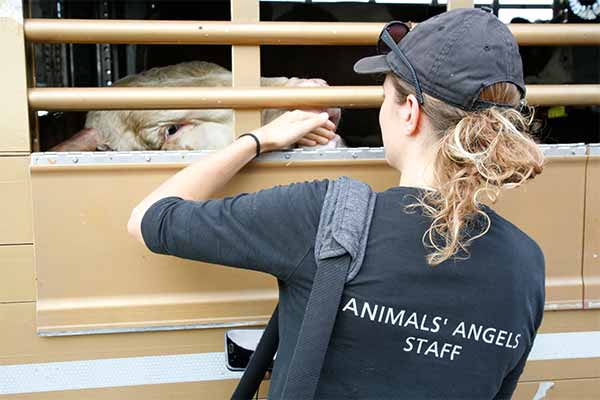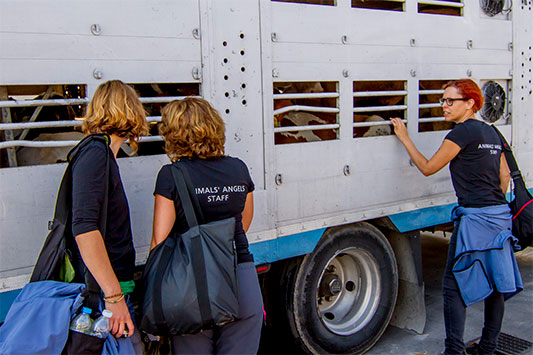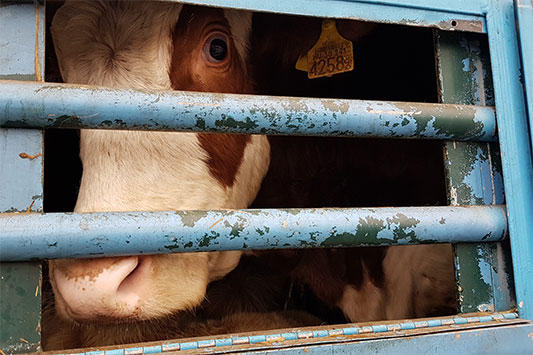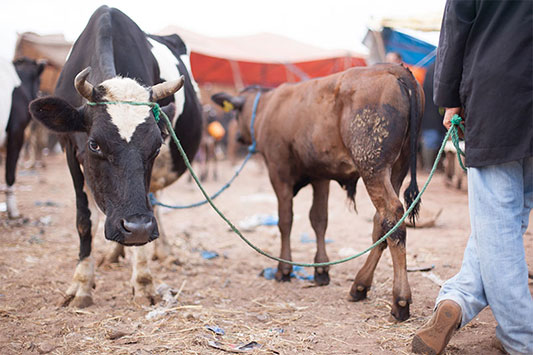Shortly before Easter, Animals’ Angels monitors the route from Eastern Europe to Italy, the biggest importer of lambs within the EU. Last year, Italy imported 888.574 lambs via transport from France, Spain, Romania, Hungary, Poland and Slovakia. Of those, more than a quarter solely in March (242.853 lambs) before Easter, when the prices are rising and the business is getting more profitable (source: Eurostat).
During their two-days stay in Slovenia, our investigators spot one truck with lambs being transported from Hungary to a slaughterhouse in central Italy. After about 10 hours of travelling, shortly before the Italian border, the driver stops to water the animals. This is mandatory after maximum 14 hours after the initial loading of the first animal.
The lambs appear to be more than 6 weeks old, which means they are considered as ‘weaned’ according to the EU Commission. Some look younger but it is difficult to assess their age. The 650 lambs inside the truck are loaded on four decks, in four compartments per deck. They are bleating and there is no food or a sufficient water system on board.
We identify the following major problems regarding the installed drinking devices:
- The devices are only installed on the right side of the truck. Hence, the animals on the left side have to press past their companions (even though the density seems to be within legal allowances). But above that, they do not know that there are water-nipples on the opposite side.
- In one of the compartments there is only one device installed.
- On the fourth deck, a lateral gate prevents the animals from reaching the water-nipples.
- The lambs usually do not know how to use the water-nipples. They only lick but do not press them. Therefore, no water comes out.
So, while the truck does indeed stop for an hour for the watering interval, the animals do not get any water. This is only one example showing how the implementation of the regulation on the protection of animals during transport fails in reality. And this is only one of the reasons why protection for animals transported to slaughter does not exist. They are submitted to the same market rules as inanimate goods sold to the best buyer. No matter the distance, these rules beat European law and the demand of the European Parliament and of more than 1 million EU citizens who said no to long distance transports.
The Italian journalist, Macri Puricelli, joined Animals´ Angels on this investigation to raise awareness with her articles about the sad reality for baby lambs transported across Europe to Italy for the ‘hunger for lambs’ that this country has for celebrating Easter.









